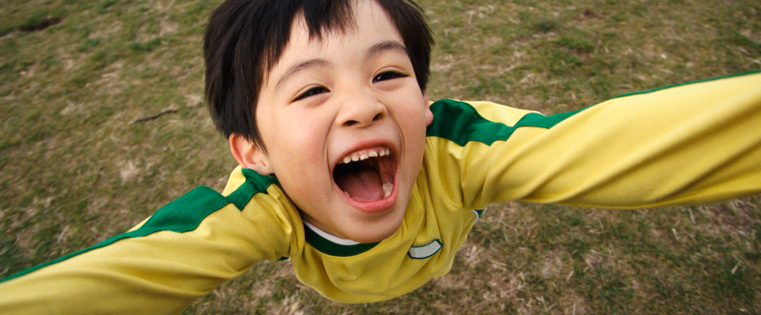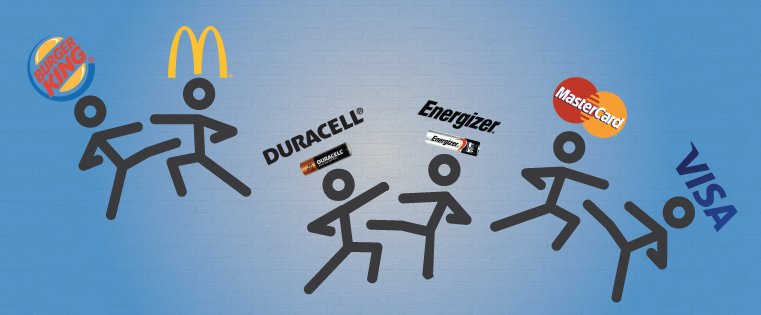 It’s a small world, after all. It’s a cliché at least as old as a major soft drink brand – sponsored musical boat ride designed by Walt Disney 50 years ago. It’s only become smaller thanks to the incredible growth in connectivity, mobility, and international commerce since then – right?
It’s a small world, after all. It’s a cliché at least as old as a major soft drink brand – sponsored musical boat ride designed by Walt Disney 50 years ago. It’s only become smaller thanks to the incredible growth in connectivity, mobility, and international commerce since then – right?

Not necessarily. A connected world paradoxically makes it easier for people to self-segment into an endless assortment of micro-communities. Automatic news feeds ensure people only see stories that confirm their preexisting beliefs. Even an enterprise like Meetup – ostensibly dedicated to facilitating real-world interactions – only works because it provides assurance of meeting people with shared interests. And anxiety over generational, cultural, and political divisions only seems to grow.
Brands today face an unprecedented challenge of reaching consumers across highly fragmented worlds – physical and virtual, social and cultural – while maintaining a recognizable identity, whether the medium is a traditional ad, a pop-up event, or a 140-character tweet. How can they succeed?
Honor the Family
One way is to remember that the family remains, for the most part, a cohesive unit in every part of the world. So, for example, while the average U.S. household has about six connected devices – with more than a third of the population regularly connecting via three or more screens – much of that interaction is occurring among families with shared experiences and aspirations.
In decades past, the family would gather around the TV during prime time, and marketers would strive to create messages that resonated across the generations. Today, brands can reach family members of all ages individually, at any time of day, in the context of any activity anywhere. But this disparity of media channels and devices can actually be seen as an extension of the living room experience.
When the family comes home at the end of the day, smart marketing ensures every member has already been exposed to messaging that can then crystallize around the glow of the TV set. And expect family members – especially the kids – to continue interacting with other screens even while they watch. That’s an opportunity in itself, as the Interactive Advertising Bureau has found that being exposed to ads on other screens in addition to TV increases brand recall by 25 to 33 percent.
Think Beyond Traditional Assets
How can brands deliver a consistent identity across a proliferation of platforms and media? What value does a tagline have when restricted to the 140 characters of a tweet?
Some brands are learning to decouple their identity from traditional marketing assets. Think, for example, of Google’s ever-changing “logo,” the clever “doodles” that seem to spontaneously appear (there’s actually a lot of work behind them) to celebrate holidays, historical events, and influential people.
Google doodles work brilliantly to identify the brand for many reasons. They compel attention as users decode the brand name disguised within each doodle. They’re often interactive, offering simple games and entertainment that prolong and reward focus. They look good and work well on smartphones and tablets, making Google a fun part of the mobile experience. But most of all, doodles reinforce the brand by representing exactly what Google stands for – a gateway to all the world’s information. There’s always a surprise for everyone in the world to learn from and relate to – and they’re all experiencing it at the same time, driving a daily conversation that revolves around Google.
Turn Campaigns Into Conversations
Campaigns are planned, slow, and all about the brand. Conversations are dynamic, responsive, and all about the consumer. And consumers are gaining power as they engage in conversations with or without active participation from brands. Brands need to harness that power. Consumers are learning to love creating their own content, and brands can gain advocates by helping them do just that.
For example, Magnum ice cream has created pop-up Pleasure Stores in locations including Singapore, Shanghai, and Sydney where visitors can design their own artful ice cream bar creations. Tablets are provided in the store along with a hashtag where customers can share their edible art on the Magnum Lookbook – continuously driving customer centered advocacy for the brand.
Deliver Creative Experiences
Magnum’s online Pleasure Hunt games give customers another way to be creative – playfully exploring across the boundaries of different countries and even the websites of partner brands. It is a world of new, luxury experiences and brands linked to Magnum. And the player can share the adventure and her score with friends through social media – creating still more links and spreading the experience.
Here are a few other ways brands have delivered memorable experiences rather than canned messages:
- The Special K Post Office, Australia’s first pop-up “social currency shop,” allowed visitors to choose a snack and “pay with a post” to Facebook, Twitter, or Instagram.
- Coke Japan allowed people to pay for beverages by dancing in front of an interactive screen.
- Metro St James Café, an Australian coffee shop, lets customers pay for coffee by kissing their partners between 9:00 and 11:00 am.
With a relatively small outlay compared to conventional advertising, these ventures engage consumers in a way they’ll remember and encourage them to share the experience. They’re creative approaches that involve people socially in a much more interactive and meaningful way than a self-serving request for “likes.”
Make Your Beliefs Your Brand
Our task as brand owners is to always look for new ways to connect with people. That’s becoming easier as new channels of communication are opened. But even as technical obstacles are removed, the fragmentation of physical, virtual, social, and cultural worlds is revealed.
We can no longer rely on the stability of the audience and available channels to deliver an integrated brand message. In fact, we can no longer count on simply “delivering” a message at all. We’re now part of an endless global discussion, taking place through channels that continuously emerge and evolve.
Historically, in order for brands – from coffee to diamonds – to drive emotional connections, they drew from the emotion of people’s relationships with one another since they were distanced by the one-way messaging of traditional media.
Now, the floodgates are open for emotional connections to be made based on direct dialog – shared values, background, beliefs, interests, lifestyle, hobbies, preferences, and so on. The key for any brand owner is to have a core belief system that they remain faithful to while connecting across mediums, platforms, and cultures.
Your core beliefs are the only “glue” strong enough to hold all your brand messaging together, allowing you to keep control over what the brand means no matter where the conversation goes.
Brands that stand for something – everywhere, every time – stand to make the greatest impression. And they keep their world at a manageable size.
Sources:
- Bindley, Katherine. “Pay With Kiss A Promotion Offered At Metro St James Cafe In Sydney,” The Huffington Post, June 4, 2013. Accessed April 30, 2014. http://www.huffingtonpost.com/2013/06/03/pay-with-kiss-coffee-promotion-metro-st-james_n_3379526.html
- Boothroyd, Aoife. “Special K Launches Virtual Currency Pop Up Store in Sydney,” Foodmagazine, August 12, 2013. Accessed April 30, 2014. http://www.foodmag.com.au/news/special-k-launches-virtual-currency-pop-up-store-i
- Lynn Mandy. “Pop-up Ice Cream Store Magnum Pleasure Store,” Nook Mag, September 4, 2013. Accessed April 30, 2014. http://www.nookmag.com/pop-up-ice-cream-store-magnum-pleasure-store/
- Magnum Ice Cream Pleasure Hunt. Accessed April 30, 2014. http://pleasurehunt.mymagnum.com/
- Nielsen Company. “A Comprehensive Picture of Digital Video and TV Advertising,” Interactive Advertising Bureau Online Video Study, 2012. Accessed April 30, 2014. http://www.iab.net/media/file/Digital-Video-and-TV-Advertising-Viewing-Budget-Share-Shift-and-Effectiveness-FINAL.pdf
- Schild, Bill. “How Brands Can Solve the Targeting Paradox,” iMedia Connection, February 11, 2014. Accessed April 30, 2014. http://www.imediaconnection.com/content/35919.asp









